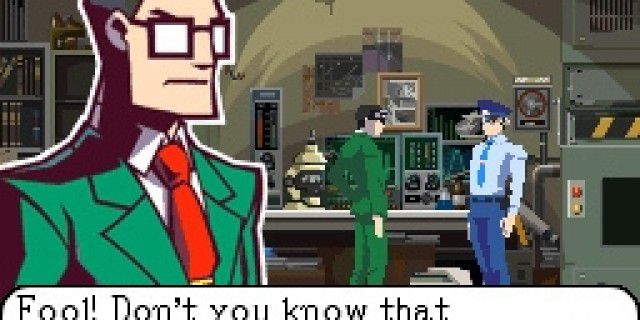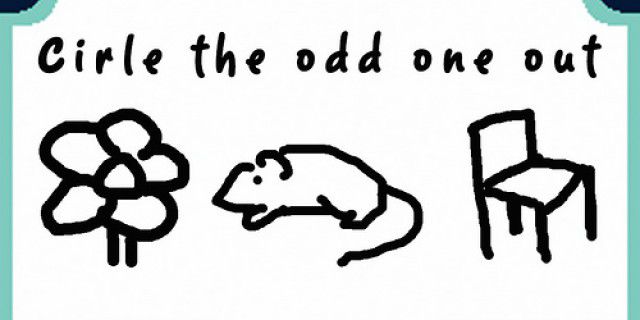A few months ago I reviewed Junior Brain Trainer 2 on DS and awarded the game a healthy 7 out of 10. I found the game a little low on visual panache but delivered on its promise to deliver basic learning skills aimed at younger kids.
The next game in the series is Junior Brain Trainer Maths Edition and I dare say that almost all children could do with a little bit of extra maths tuition in their lives. Yes of course we could all spend extra time with our kids doing maths puzzles at home for free using old fashioned pencil and paper, but it’s boring right? Instead we choose to watch EastEnders and Coronation Street on TV leaving our children to wander the streets murdering tramps and drinking cider.
Alright I’m exaggerating a little but I’m sticking with my underlying message that kids on average are becoming less proficient in basic skills such as; Reading, Writing, Spelling and Maths. I’m not sure if educational video games are the answer to our nations problems but they could be part of the answer, so in my opinion it’s worth giving them a chance.
Just like Junior Brain Trainer 2, this DS puzzler has been created to help support the activities that 7-11 year old children are learning in school. It starts off with a short introductory story featuring a community of rats living in the happy Rodentown. Suddenly without warning an evil dude called Count Ratatrax flies his airship over the village and captures many of the inhabitants, locking them up in cages. On board Ratatrax is using the rats in cruel scientific experiments but one lucky rat called Newton managed to avoid capture, he has subsequently snuck onto the airship to set his friends free. Newton meets up with a clever Rat called Flanagan who has a plan to destroy the airship by overloading the main boiler. If successful, Flanagan should be able to build an escape vessel with parts of the crumbling airship, all you need to do is to help overheat that boiler by bursting valves….well, completing maths puzzles.
Okay so that’s the goal, complete fifteen maths/logic puzzles and save the rat people, sounds good to me. Of course being an animal lover I was already motivated to help save the little critters from harm and it’s especially nice to see some pro animal rights messaging in media for change.
I think it would be a bit excessive to cover all fifteen of the mini-games so I’ll just mention two of my favourites and the two that I liked the least. First up two maths games I liked:
Mystery Number is a basic yet addictive little game in which you have to fill in a missing part of a maths sum. Example, 8 + ? = 14. Just like the rest of the games you’re up against the clock to get as many correct answers as possible.
Domino’s is a tricky race to complete a domino chain. Can you line up the dominoes in the correct order from either lowest to highest (or vice versa) quickly enough?
Alright now for the only two maths games out of the whole package that I didn’t like.
Light Up sounds simple in that you are asked to place light bulbs on a grid via numerical clues and light up the whole area. However even on the easiest setting I didn’t manage to complete this puzzle, I understand the principle but it appears to me that no matter what you do, you can’t complete the puzzle to the games satisfaction. Maybe I’m just really bad at this game, I don’t know.
Nurikabe is another tricky one. Here is the description word for word copied straight from the game manual. You let me know if any kids aged 7 that you know could work this out.
“Black out the grid and create islands by surrounding the white boxes with numbers printed on them. The numbers indicate how many white blocks there should be to each island. The islands of white boxes cannot share any sides and the black boxes cannot form blocks of four boxes or more. All the black boxes must be linked to each other, however they cannot be linked diagonally.” Once again I spent ages playing this puzzle on the easiest setting to no avail, either it is just too tough for me, the game is broken or the rules just not clear enough.
So what have we actually got here? Junior Brain Trainer Maths Edition is a very nicely presented educational titles with thirteen good puzzles and two horrid ones. There are three difficulty levels and if I’m honest, even the lowest setting (for 7 to 8 years) was actually harder than I suspected and I will freely admit I got many questions wrong. The harder levels certainly are harder but the games physically remain the same. Mainly things like the sums get harder by asking you to work out trickier things like percentages (%). I certainly think that most children should start on the easiest setting and work their way up.
I’m a bit annoyed that I couldn’t actually complete the game, those two bloody puzzles were all I needed to finish to get the last parts for the escape vessel. However, the other thirteen games are fun and are more than challenging enough on the toughest setting to give my brain a workout.
Once again I can’t officially step into the body of a child without getting arrested, the game certainly features some good maths puzzles and will need skills to complete them. Whether or not it will help your kids at school or not is a different matter, I personally think all the practice a game like this results in will probably be beneficial but don’t come running to me if your kid doesn’t get a good grade in their maths exam ok? Oh yeah, before I forget – it has good graphics and fair to middling sound effects and music. The touch screen controls work great as does the text recognition, overall it’s functionally is very good and deserves a rather good 8 out of 10.
Get Junior Brain Trainer Maths Edition now
New: Buy Junior Brain Trainer Maths Edition from Amazon.com

Related: Junior Brain Trainer 2





Many thanks for the kind review.
For the two games your are in pain I may help you :
For Light UP :
The rules are simple. Light Up is played on a rectangular grid. The grid has both black cells and white cells in it. The objective is to place light bulbs on the grid so that every white square is lit. A cell is illuminated by a light bulb if they’re in the same row or column, and if there are no black cells between them. Also, no light bulb may illuminate another light bulb.
Some of the black cells have numbers in them. A number in a black cell indicates how many light bulbs share an edge with that cell.
for Nurikabe
The rules are not so simple. :)
You have a grid of squares Some cells of the grid start containing numbers. The goal is to determine whether each of the cells of the grid is “black” or “white” (Islands in the Stream calls these “water” and “land” respectively). The black cells form “the nurikabe” (Islands in the Stream calls it “the stream”): they must all be orthogonally contiguous (form a single polyomino), number-free, and contain no 2×2 or larger solid rectangles (Islands in the Stream calls such illegal blocks “pools”). The white cells form “islands” (which is where Islands in the Stream got its name): each number n must be part of an n-omino composed only of white cells. All white cells must belong to exactly one island; islands must have exactly one numbered cell. Solvers will typically shade in cells they have deduced to be black and dot (non-numbered) cells deduced to be white.
To be honest we have seen here that children with 7 years old were faster and better than old folks. May be the fact we use too much the computer make us lazy ;D